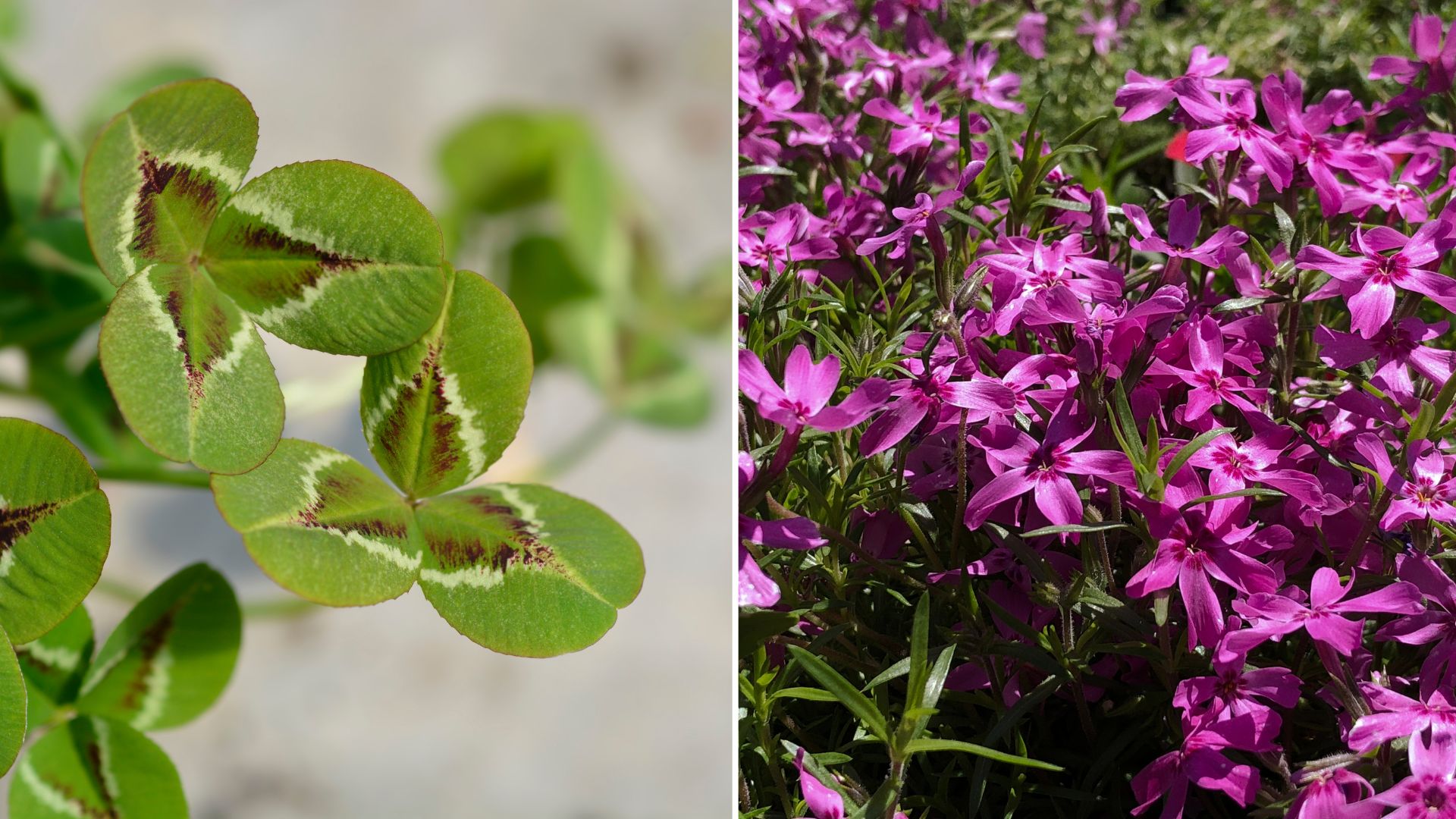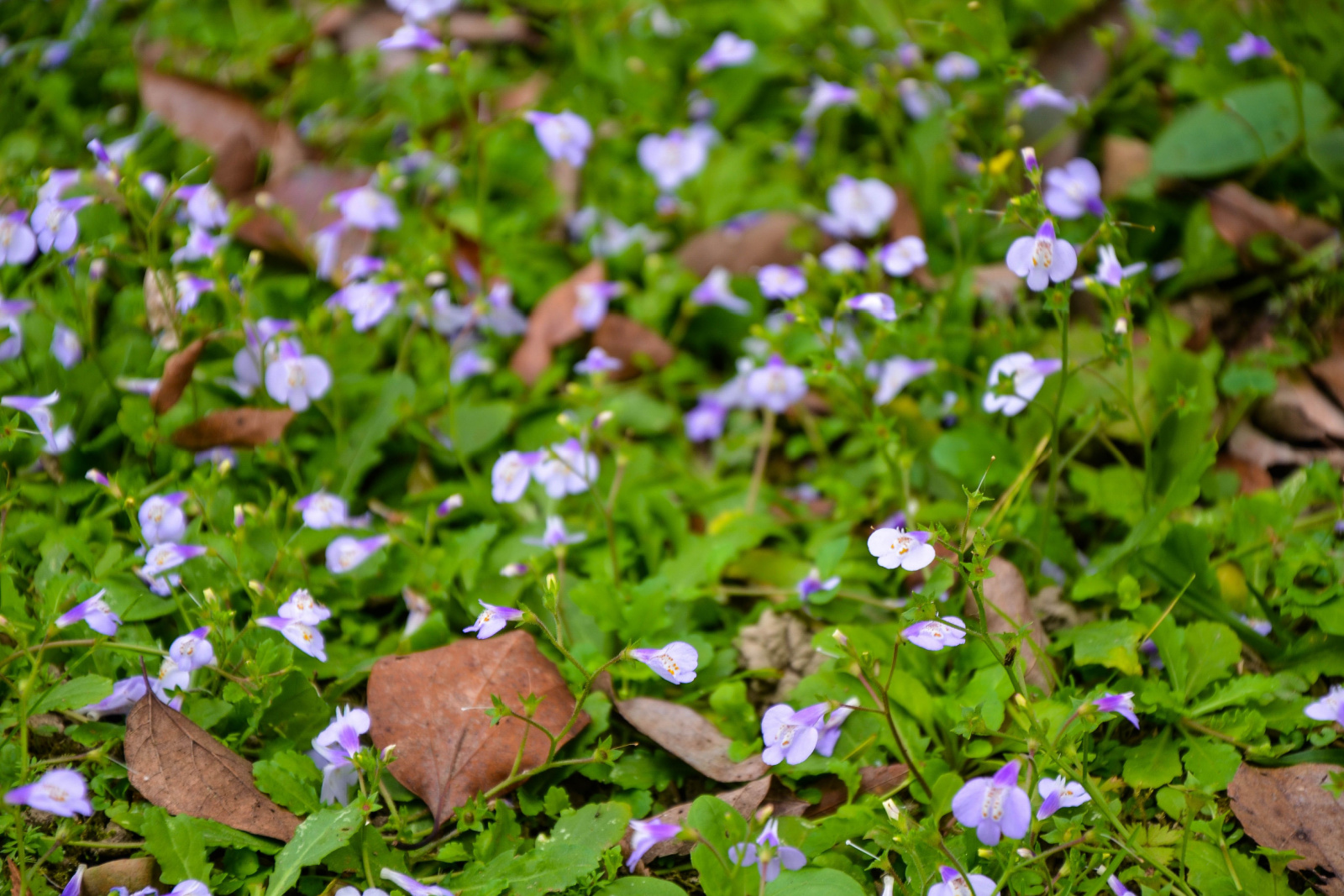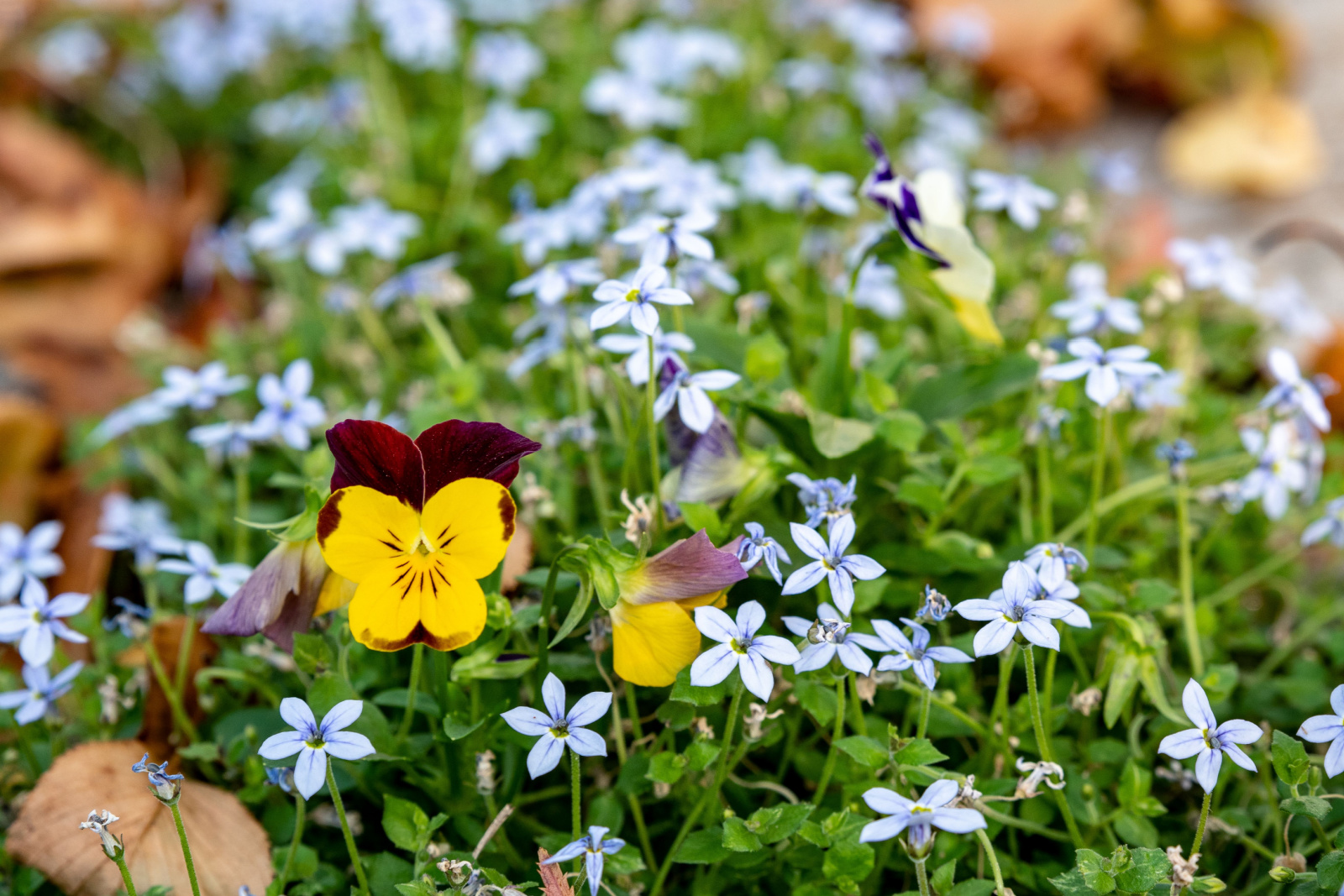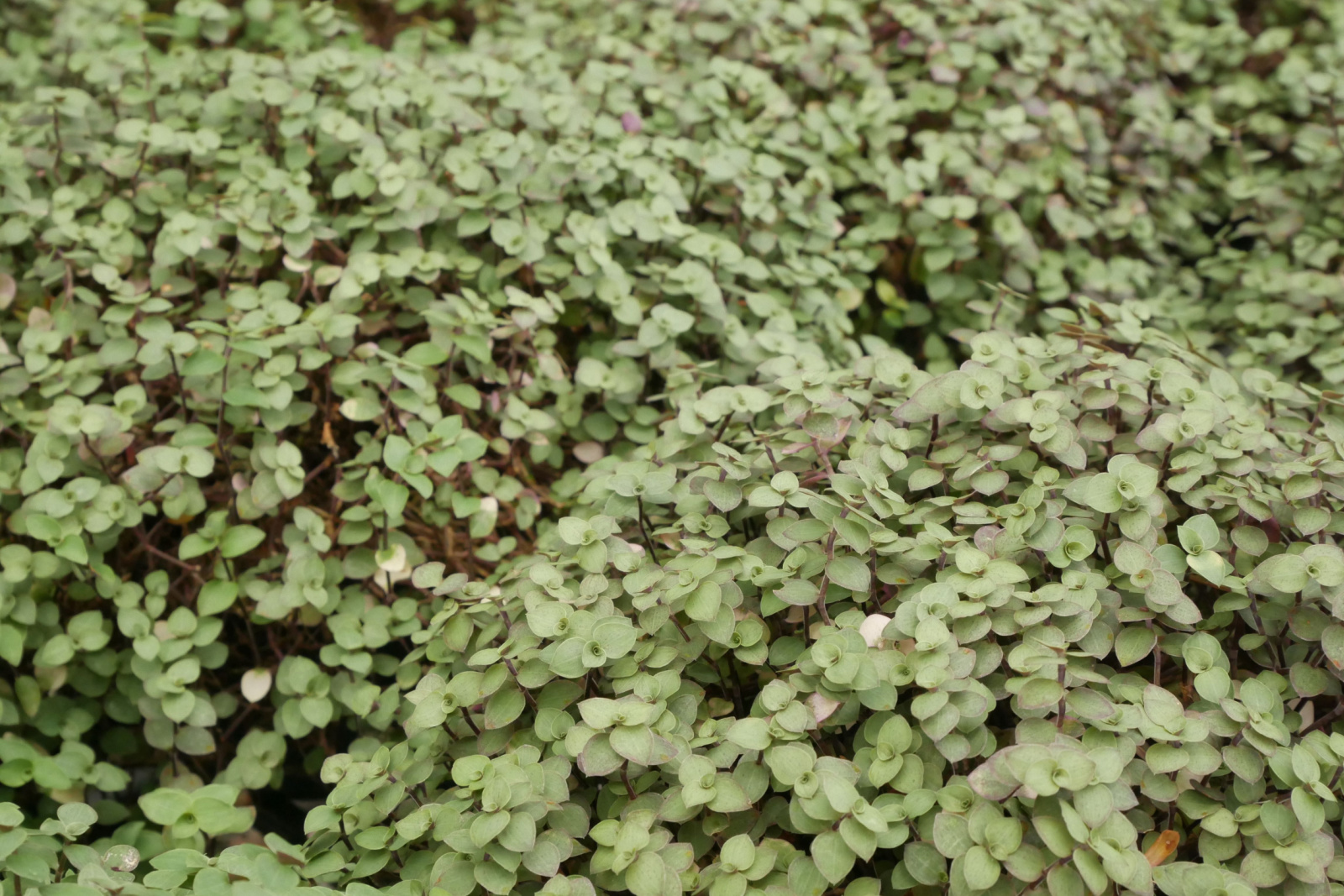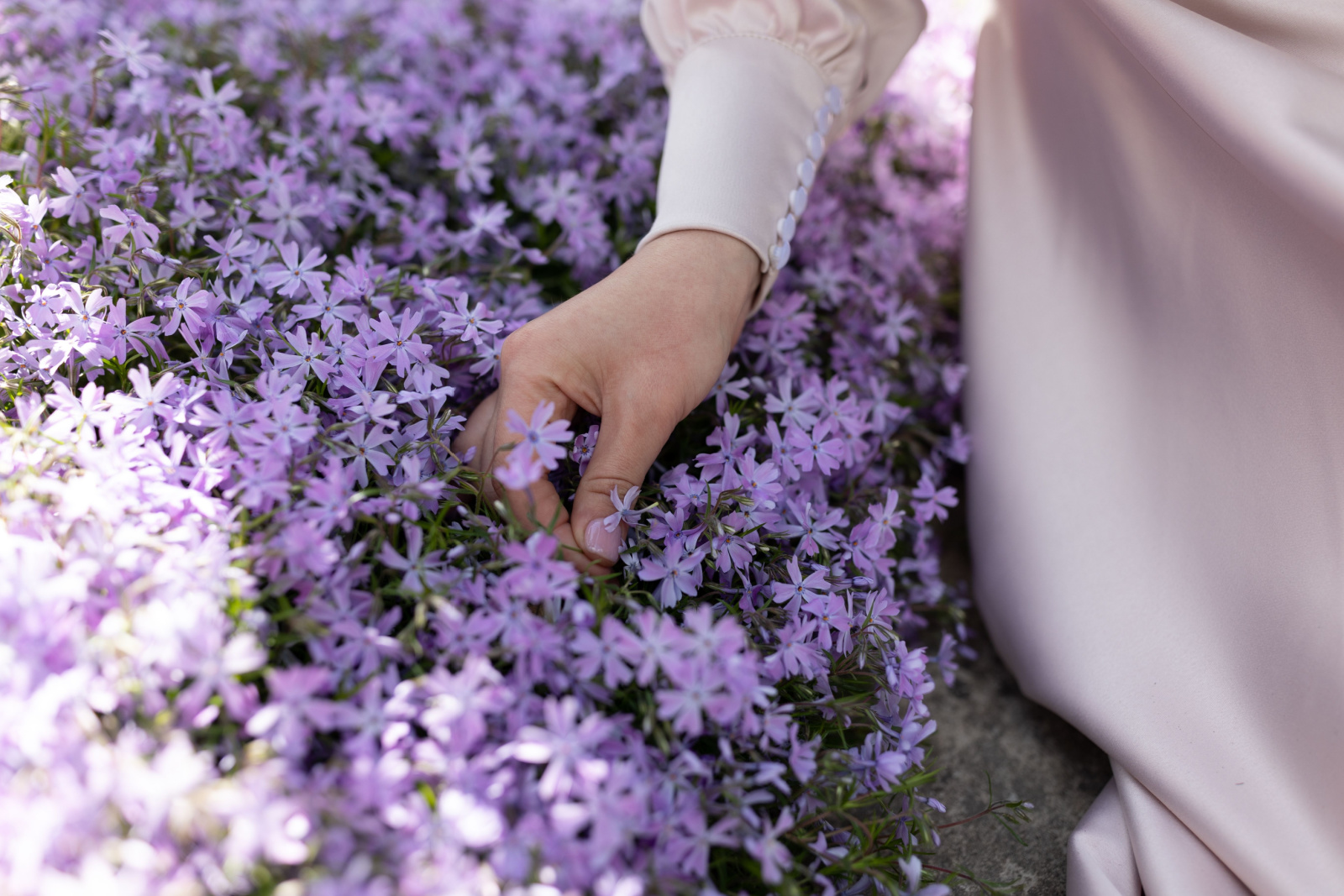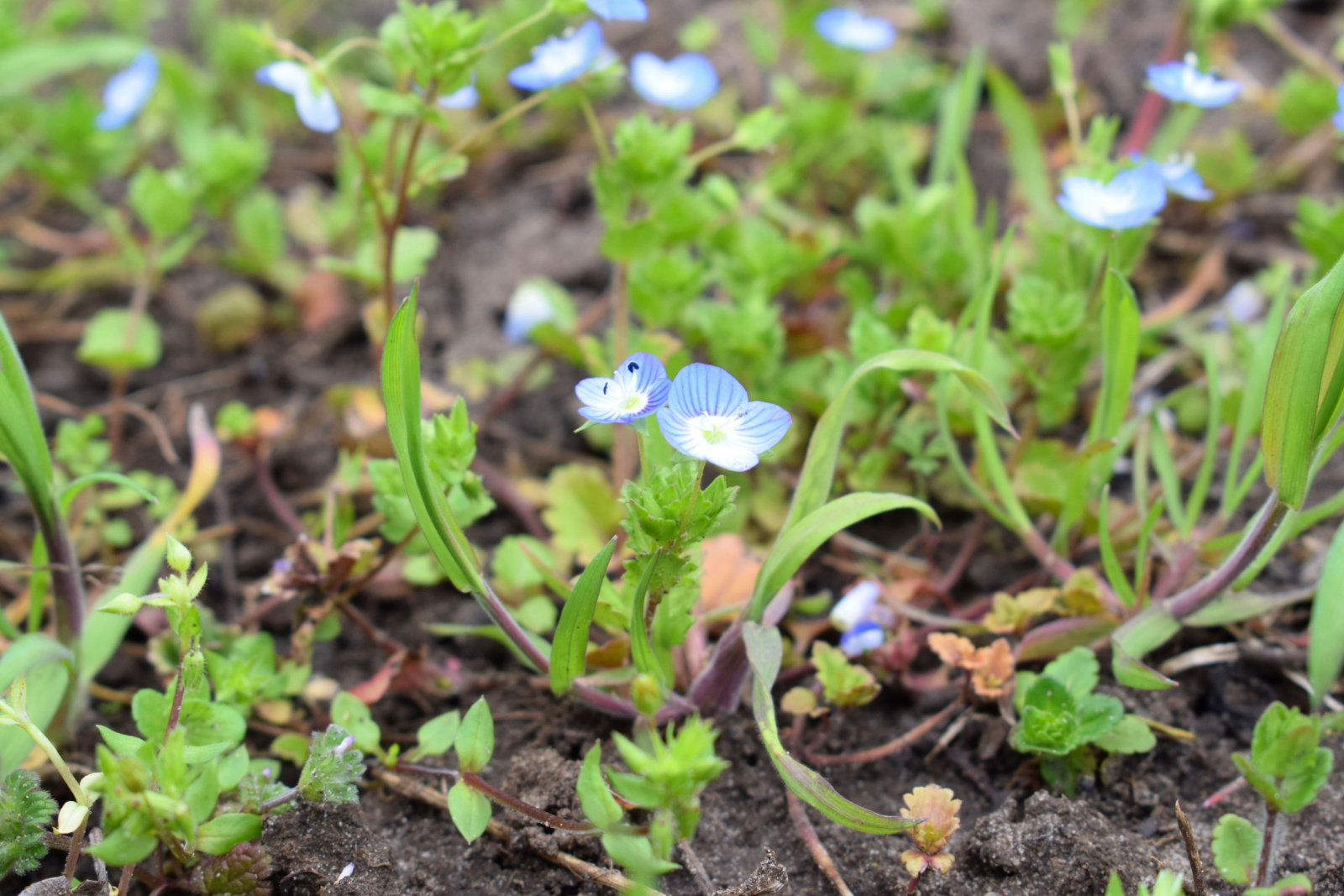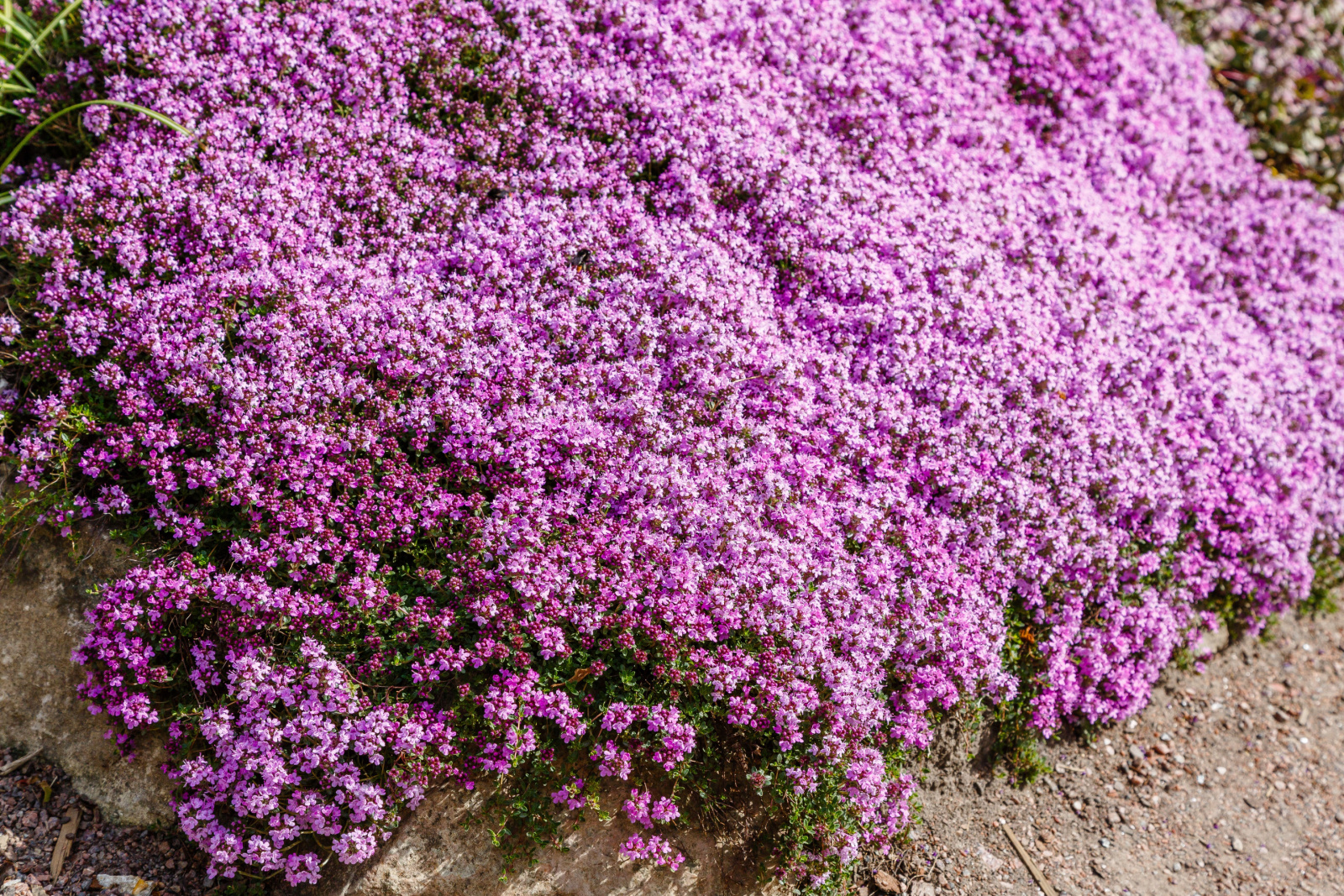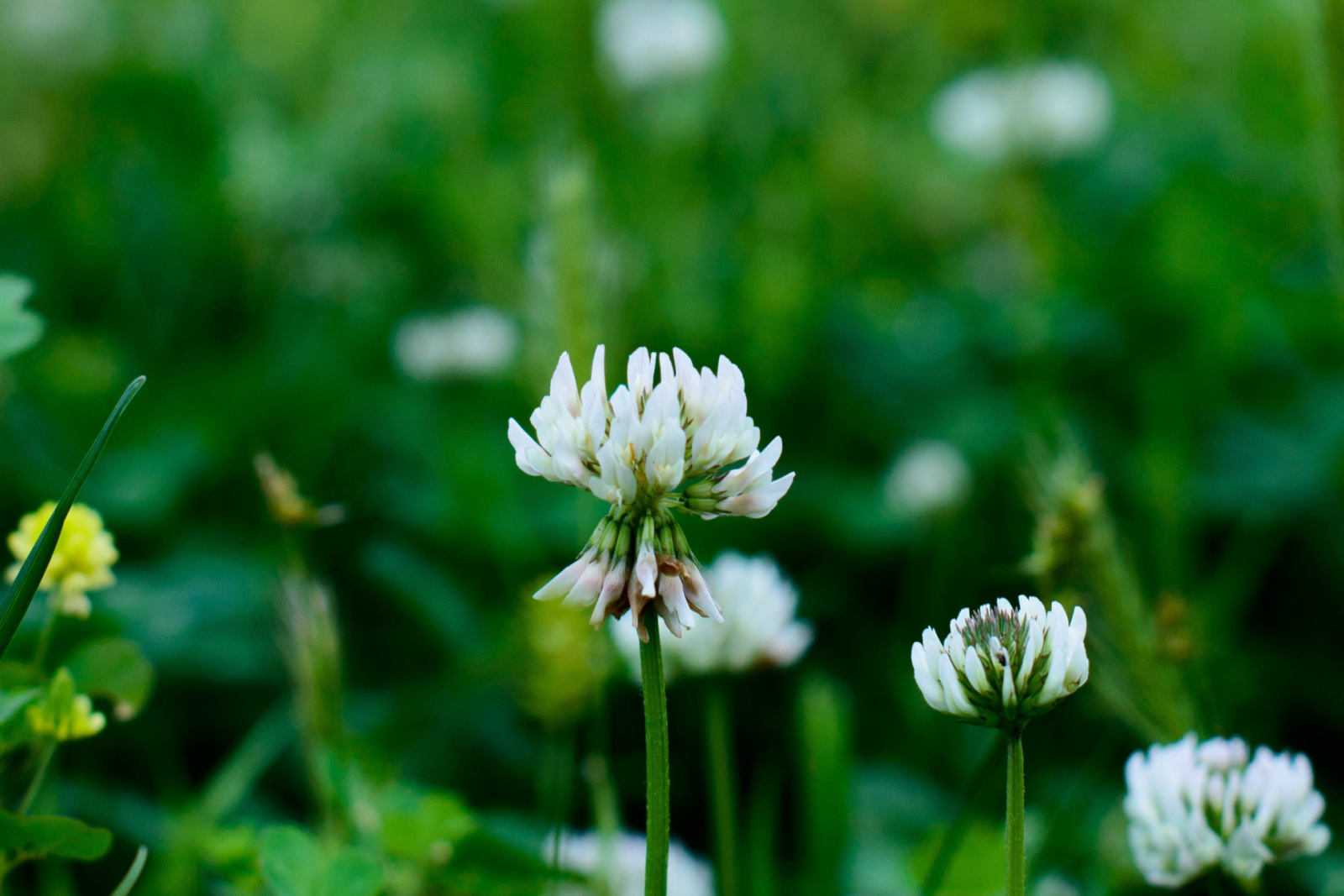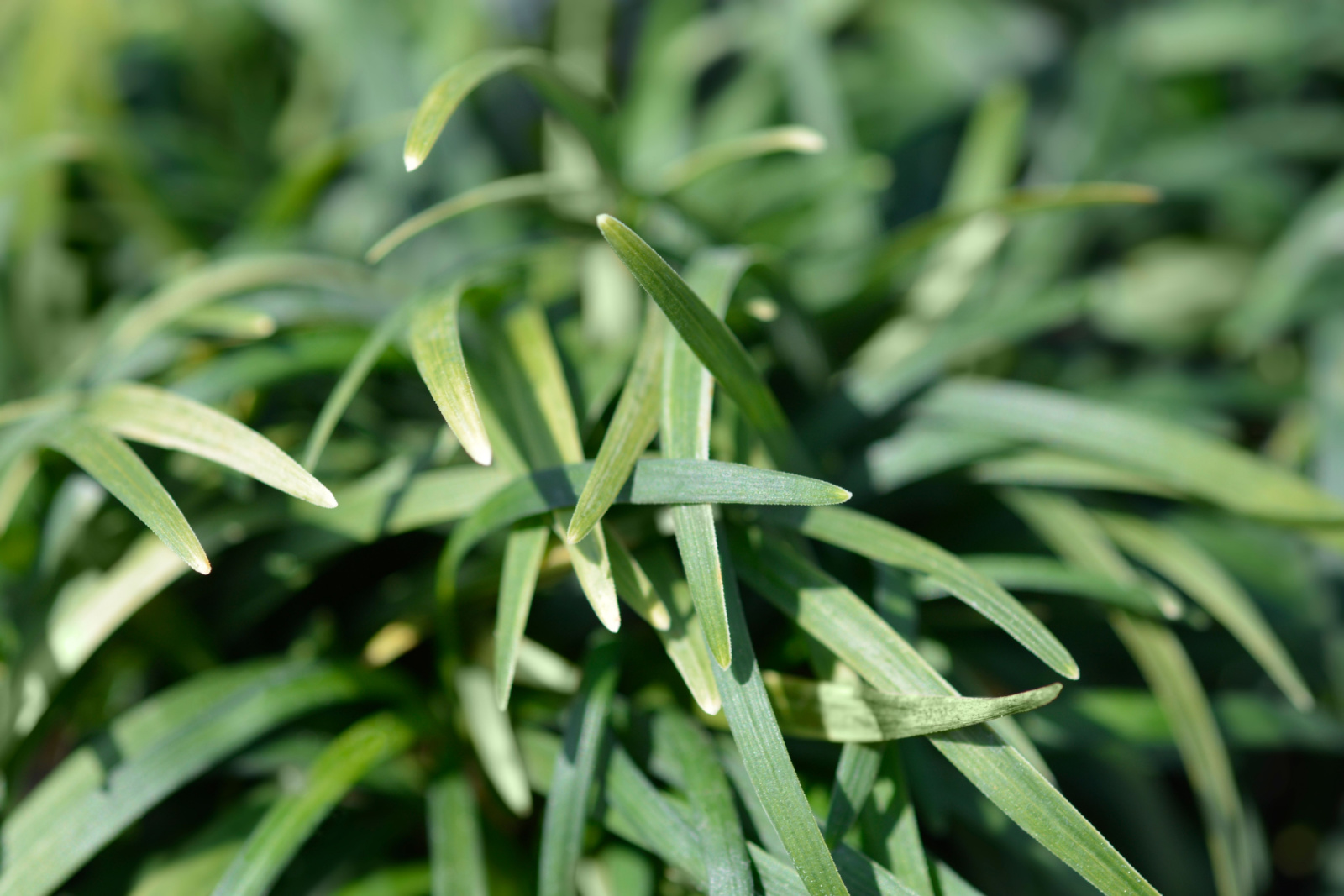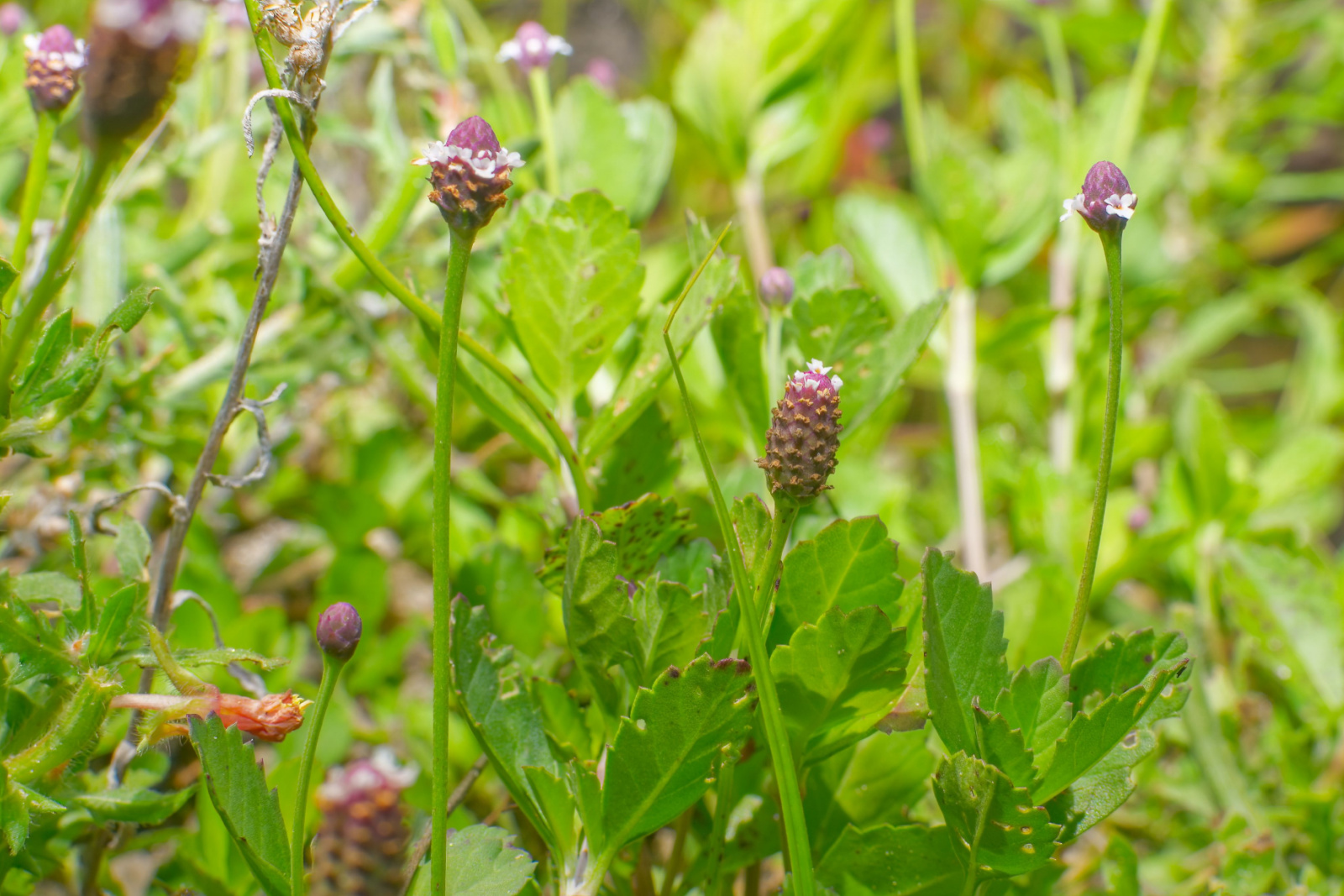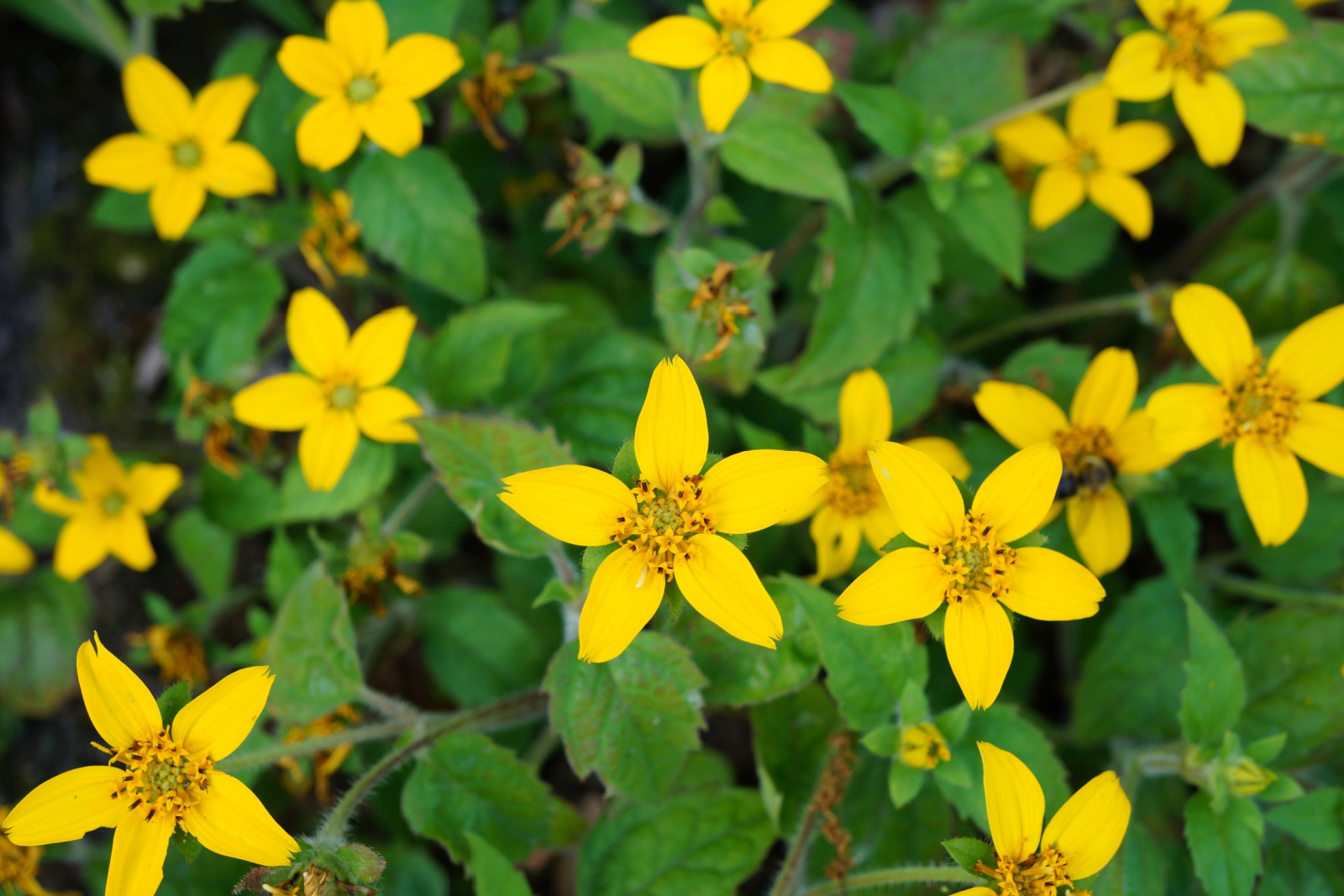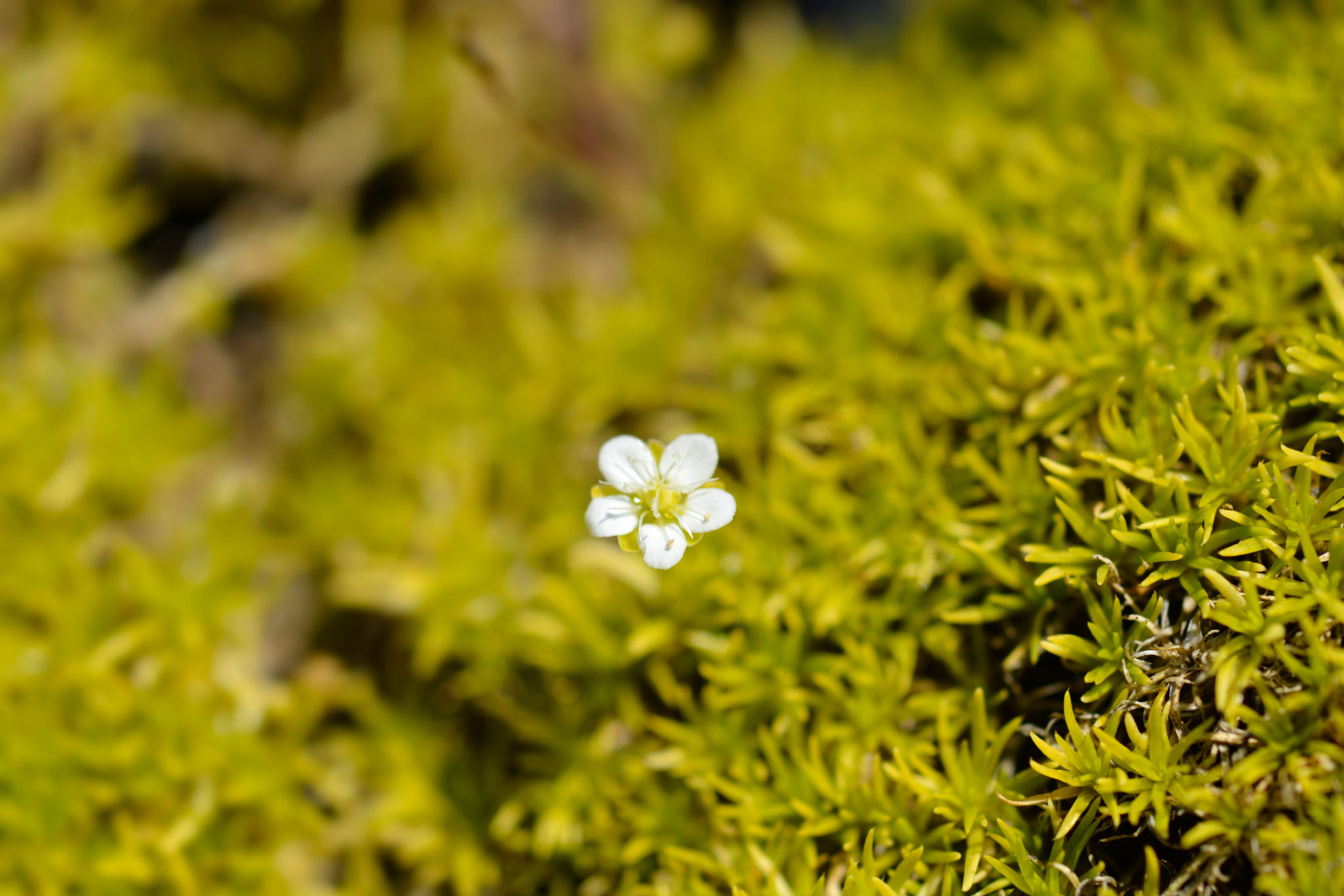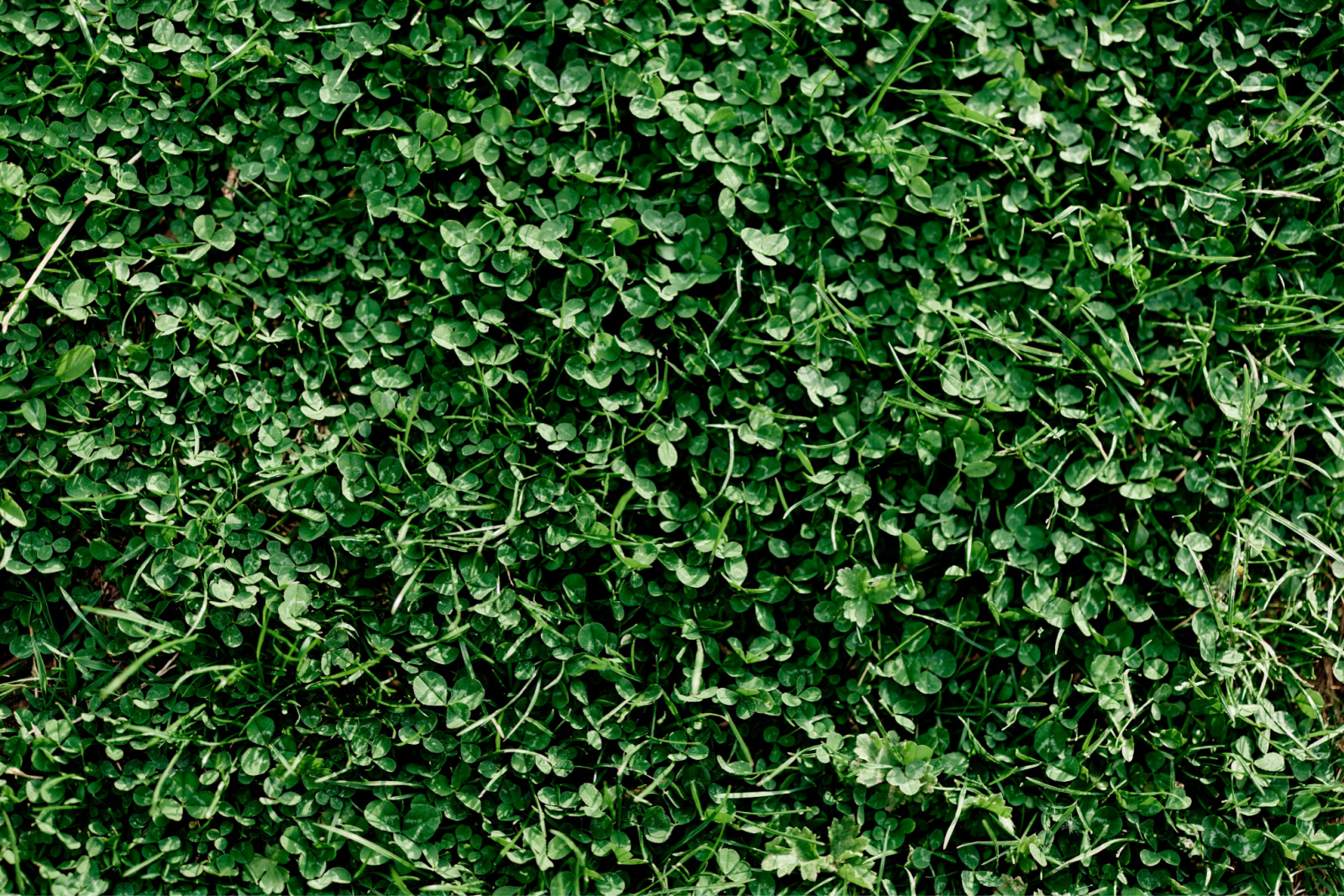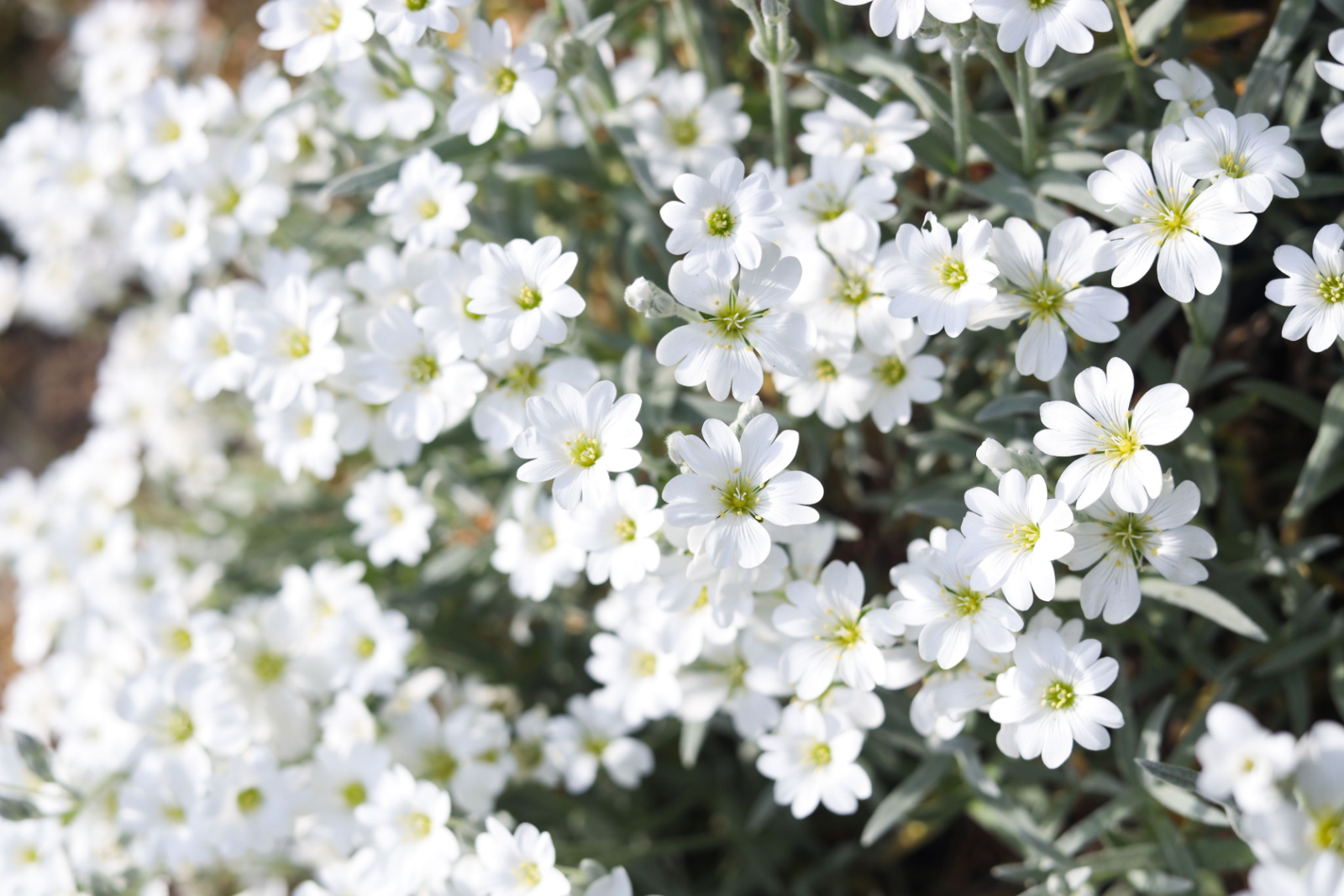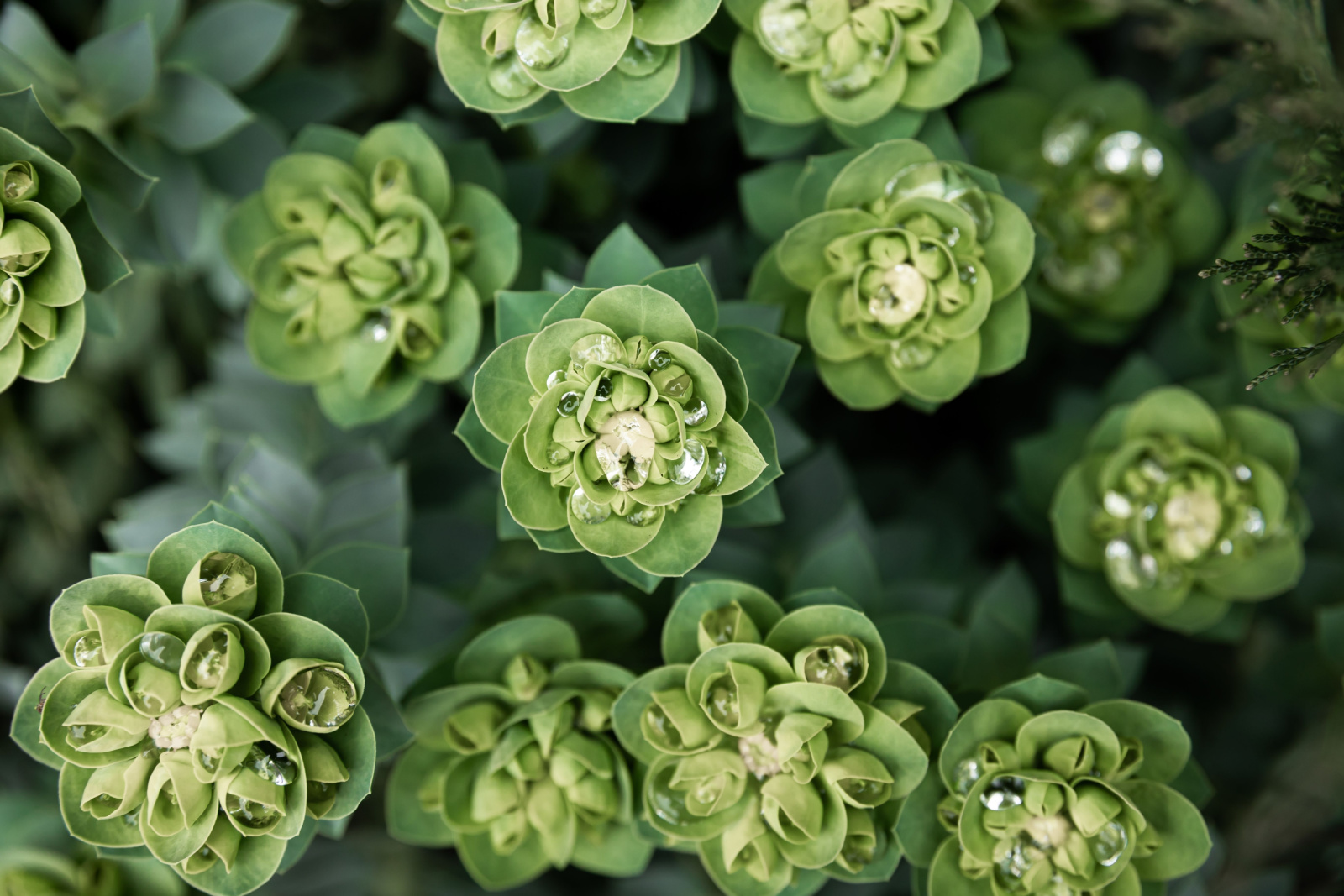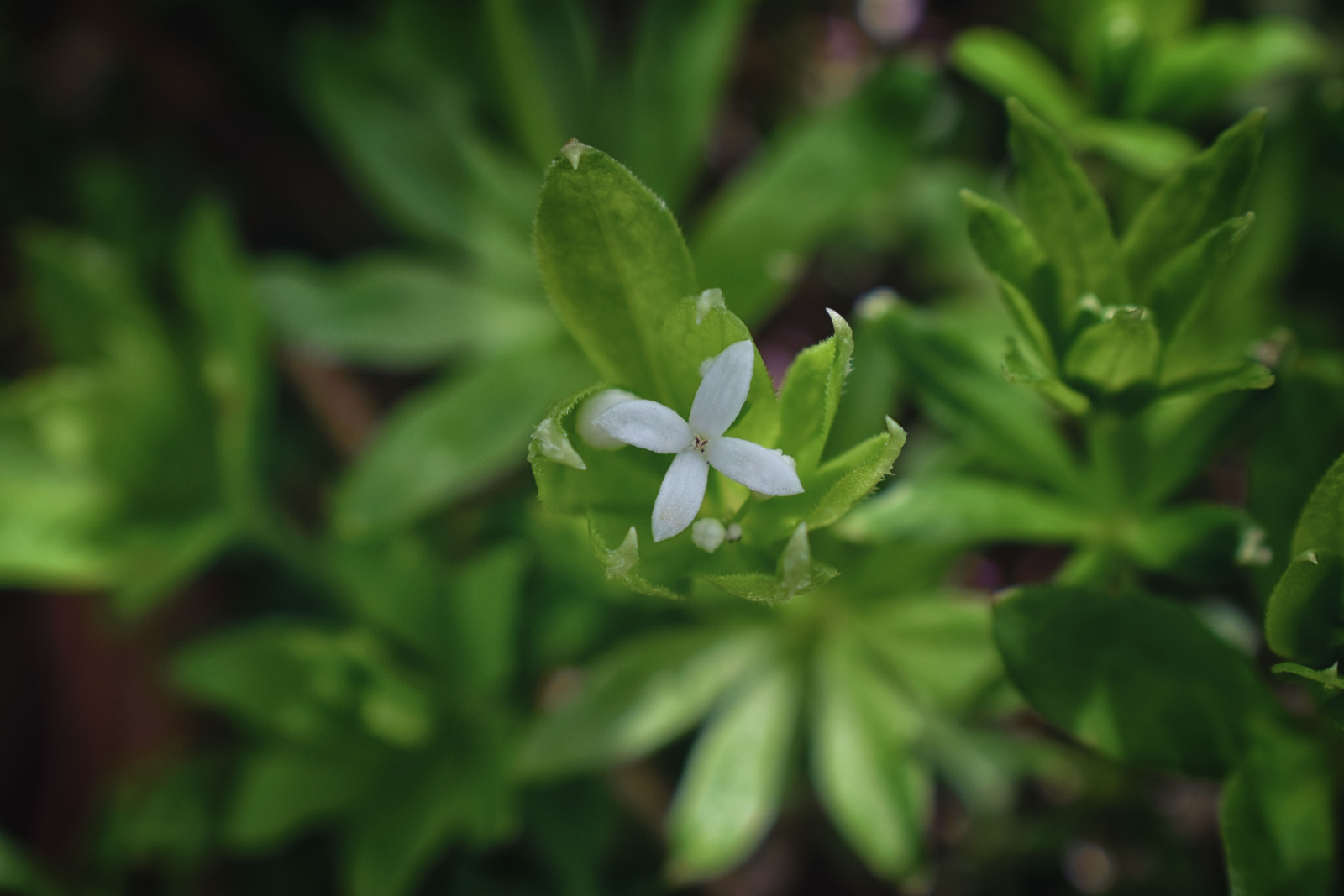Gardeners and landscapers are rethinking traditional lawns. They’re great for many things and look amazing when cared for, but they are a lot of work.
Another thing about grass lawns is that they don’t support biodiversity as much as native plants and wildflowers.
And with water restrictions happening everywhere, we have to turn to other ways of beautifying our yards.
There’s something for everyone, whether you’re looking for a low-maintenance lawn alternative, a way to attract pollinators, or an aesthetically pleasing shady corner.
Let’s check it out!
1. Blue Mazus
Light requirements: Full to part sun
Soil requirements: Moist soil or shallow stream
USDA zone: 5-8
Blue mazus is a cute ground cover ideal for small areas. It needs moist soil to thrive or you can plant it in streams or ponds no deeper than an inch.
This delicate plant can handle light or moderate foot traffic and looks adorable between stepping stones and pavers.
Beautiful purple-blue flowers adorn the deep green leaves throughout the spring and summer.
2. Blue Star Creeper
Light requirements: Bright dappled sun
Soil requirements: Slightly acidic or neutral, moist, and well-draining
USDA zone: 6-8
With high tolerance of foot traffic, blue star creeper makes an excellent ground cover for homeowners with kids, pets, or a great love for backyard picnics.
It blooms throughout spring and summer with twinkling white or pale blue flowers decorating deep green foliage.
Blue star creeper does best in indirect sunlight and some light shade, especially in hot climates.
It is a great lawn alternative, but you can also use it as an edging plant or a soft mat that fills the gaps between pavers.
3. Corsican Mint
Light requirements: Full or partial sun
Soil requirements: Rich, well-drained, and moisture-retentive
USDA zone: 7-9
Tiny mint-scented leaves and the ability to withstand light foot traffic make Corsican mint one of the favorite grass alternatives.
It produces petite pale purple flowers in summer that attract pollinators and other wildlife.
However, it is considered invasive in southeastern regions of the U.S., so you should be very careful when growing it.
4. Creeping Phlox
Light requirements: Full sun and dappled shade
Soil requirements: Fertile, moderately moist, and well-drained
USDA zone: 3-9
If you need a plant for a hot and dry rock garden, try creeping phlox. It looks stunning once it flushes out its deep pink blossoms, or you can get it in blue, purple, or white shades.
There’s a magnetic attraction between creeping phlox and pollinators that you shouldn’t miss out on if you want a garden buzzing with life.
Now comes the difficult part. There’s a never-ending dilemma in the gardening world! Which one is superior, creeping phlox or creeping thyme?
I’ll just say that creeping phlox is gorgeous, has darker shades, and is perfect for areas where you don’t walk. It is ideal for unwelcoming conditions, such as dry, rocky, and salty sites. Creeping thyme, on the other hand, tolerates some foot traffic.
5. Creeping Speedwell
Light requirements: Full sun to partial shade
Soil requirements: Loamy, sandy, moist, and well-drained
USDA zone: 3-9
This hardy ground cover tolerates moderate foot traffic and is a great alternative to traditional lawns.
In spring, petite white to lavender-blue blossoms decorate the deep green mat and attract all sorts of pollinators. In fall, the foliage obtains burgundy shades, giving this plant an all-season allure.
In addition to being a great lawn alternative, creeping speedwell makes an excellent addition in rock gardens and as cushioning between stepping stones. And as if that’s not enough, this plant is resistant to rabbits and deer.
6. Creeping Thyme
Light requirements: Full sun
Soil requirements: Well-drained and neutral to alkaline
USDA zone: 4-9
This drought-tolerant perennial can handle moderate foot traffic, making it an ideal substitute for traditional lawns.
Tiny pink or lavender blossoms appear in summer and attract numerous pollinators during that time.
Creeping thyme isn’t invasive, so you don’t have to worry about it choking your other plants once you see how quickly it spreads.
Just remember to prune it in the early spring, after flowering, and after first fall frost to reduce woody stems.
7. Dutch Clover
Light requirements: Full sun and part shade
Soil requirements: Rich, well-drained, and mildly acidic
USDA zone: 4-9
Dutch clover tolerates more foot traffic than any other clover variety, making it a perfect lawn alternative.
It is a legume and fixates nitrogen, enriching the soil with this nutrient and reducing the need for synthetic fertilizers.
Dutch clover is a magnet for pollinators and one of the most common clover varieties you can find in homesteads.
It blooms in early summer and decorates your lawn with white round flower heads.
8. Dwarf Mondo Grass
Light requirements: Full sun to shade
Soil requirements: Fertile, moist, well-drained, and mildly acidic
USDA zone: 7-11
Deep green mondo grass resembles a true grass, but it has a bushier and wilder appearance. It also looks like monkey grass and many beginner gardeners have a hard time telling them apart.
One difference between monkey and mondo grass that’s important for us to remember is that monkey grass doesn’t have dwarf varieties and mondo grass does.
So be very careful when getting this lawn substitute.
Also, I have to warn you that dwarf mondo grass can go through a certain change and stop being a dwarf variety.
Additionally, dwarf types, such as black mondo grass, tend to be rather pricey. But I think they’re worth it. They tolerate heavy traffic, deep shade, drought, salty soils, and animals nibbling their leaves.
9. Frogfruit
Light requirements: Full sun to dappled shade
Soil requirements: Rich and slightly acidic
USDA zone: 6-11
This low-growing perennial is a perfect ground cover for lawns from Texas to Florida. It tolerates various types of soils, can thrive in poor drainage, and handle drought and flooding.
Its evergreen foliage provides a year-round interest while the sprinkle of white flowers makes it more appealing in summer and fall.
Frogfruit attracts numerous pollinators and ensures your vegetable garden is well pollinated.
10. Green And Gold
Light requirements: Full sun to full shade
Soil requirements: Acidic, fertile, and well-draining
USDA zone: 5-9
This ground cover is perfect for woodland and shaded gardens, although it can thrive in full sun if the soil is consistently moist.
It blooms profusely throughout the spring and summer, adorning a bright green leaf mat with golden flowers.
Green and gold is native to regions from Pennsylvania to Louisiana, so you won’t have to worry about it invading your yard despite its fast spread and self-seeding nature.
This plant is semi-evergreen, and its leaves may enter dormancy in winter.
11. Irish Moss
Light requirements: Full sun and partial shade in hotter climates
Soil requirements: Fertile, moist, and well-drained
USDA zone: 4-8
Irish moss is one of my favorite ground covers, probably because it never lived throughout the Floridian summer.
Its bushy, deep green mat and a sprinkle of white daisy-like blossoms are everything you need to make the ground around trees or gaps between pavers shine.
Irish moss is a perfect lawn substitute as it tolerates moderate-to-heavy foot traffic, looks amazing, and doesn’t require a lot of maintenance.
12. Microclover
Light requirements: Full sun to partial shade
Soil requirements: Fertile, well-drained, and slightly acidic
USDA zone: 3-9
If you’re not a fan of regular-sized Dutch clover, try microclover instead. This low-maintenance lawn-grass alternative will look gorgeous even if you don’t mow it and will enrich your soil with nitrogen.
Microclover produces tiny blossoms in late spring and early summer, attracting bees, bumblebees, and butterflies.
(So be careful where you step on it barefoot!)
13. Snow-In-Summer
Light requirements: Full sun
Soil requirements: Well-draining and slightly acidic
USDA zone: 3-7
This plant is an excellent ground cover for sunny regions and dry areas. It spreads fast, but doesn’t tolerate high foot traffic, so it’s not the best option for those who love pacing up and down their lawn.
But it is a gorgeous addition to any rock garden or along the curb side.
Snow-in-summer blooms in late spring and early summer and adorns the silvery leaves with purely white blossoms.
It is deer resistant and will attract numerous pollinators to your garden.
14. Stonecrop
Light requirements: Full to partial sun
Soil requirements: Well-drained, poor, neutral or alkaline
USDA zone: 4-9
Some sedum varieties are hardy down to zone 3, although most of them can tolerate cold lower than zone 4.
Stonecrop is a dense and bright green ground cover that tolerates moderate foot traffic, heat, and drought.
In late summer, it flushes out vibrant pink blossoms that attract bees, butterflies, and other pollinators to your garden.
Use it instead of a traditional lawn, to fill in the gaps between stepping stones, in rock gardens, along pathways, as patio edging, etc.
15. Sweet Woodruff
Light requirements: Partial to full shade
Soil requirements: Moist, well-drained, and acidic
USDA zone: 4-8
If you want a starry night on your lawn, then planting sweet woodruff is a wise choice. The bright green foliage is sprinkled with numerous white blossoms.
It doesn’t tolerate foot traffic, but will grow in the heaviest of shade, providing interest throughout the year, especially in spring when fragrant blossoms appear.
Sweet woodruff is one of the no-mow lawn alternatives that will take you one step closer to a zero-maintenance garden.
It is resistant to deer and rabbits, and will grow in places other plants won’t, such as beneath walnut trees.

